Potřebujeme váš souhlas k využití jednotlivých dat, aby se vám mimo jiné mohly ukazovat informace týkající se vašich zájmů. Souhlas udělíte kliknutím na tlačítko „OK“.
ASTM E1888/E1888M-12
Standard Practice for Acoustic Emission Examination of Pressurized Containers Made of Fiberglass Reinforced Plastic with Balsa Wood Cores
Automaticky přeložený název:
Standardní praktiky pro akustické emise vyšetření tlakových nádob vyrobeny ze sklolaminátu vyztuženého plastu Balsy jader
NORMA vydána dne 15.6.2012
Informace o normě:
Označení normy: ASTM E1888/E1888M-12
Poznámka: NEPLATNÁ
Datum vydání normy: 15.6.2012
Kód zboží: NS-43459
Počet stran: 9
Přibližná hmotnost: 27 g (0.06 liber)
Země: Americká technická norma
Kategorie: Technické normy ASTM
Kategorie - podobné normy:
Hluk působený stroji a zařízeními
Stacionární nádoby a nádrže
Anotace textu normy ASTM E1888/E1888M-12 :
Keywords:
acoustic emission, balsa core, composite pressure vessel, tank trailer, ICS Number Code 17.140.20 (Noise emitted by machines and equipment), 23.020.10 (Stationary containers and tanks)
Doplňující informace
| Significance and Use | ||||||||||||||||||||
|
This practice does not rely on absolute quantities of AE parameters. It relies on trends of cumulative AE counts that are measured during a specified sequence of loading cycles. This practice includes an example of examination settings and acceptance criteria as a nonmandatory appendix. Acoustic emission (AE) counts were used as a measure of AE activity during development of this practice. Cumulative hit duration may be used instead of cumulative counts if a correlation between the two is determined. Several processes can occur within the structure under examination. Some may indicate unacceptable flaws (for example, growing resin cracks, fiber fracture, delamination). Others may produce AE but have no structural significance (for example, rubbing at interfaces). The methodology described in this practice prevents contamination of structurally significant data with emission from insignificant sources. Background Noise—Background noise can distort interpretations of AE data and can preclude completion of an examination. Examination personnel should be aware of sources of background noise at the time examinations are conducted. AE examinations should not be conducted until such noise is substantially eliminated. Mechanical Background Noise—Mechanical background noise is generally induced by structural contact with the container under examination. Examples are: personnel contact, wind borne sand or rain. Also, leaks at pipe connections may produce background noise. Electronic Noise—Electronic noise such as electromagnetic interference (EMI) and radio frequency interference (RFI) can be caused by electric motors, overhead cranes, electrical storms, welders, etc. Airborne Background Noise—Airborne background noise can be produced by gas leaks in nearby equipment. Accuracy of the results from this practice can be influenced by factors related to setup and calibration of instrumentation, background noise, material properties, and structural characteristics.
|
||||||||||||||||||||
| 1. Scope | ||||||||||||||||||||
|
1.1 This practice covers guidelines for acoustic emission (AE) examinations of pressurized containers made of fiberglass reinforced plastic (FRP) with balsa cores. Containers of this type are commonly used on tank trailers for the transport of hazardous chemicals. 1.2 This practice is limited to cylindrical shape containers, 0.5 m [20 in.] to 3 m [120 in.] in diameter, of sandwich construction with balsa wood core and over 30 % glass (by weight) FRP skins. Reinforcing material may be mat, roving, cloth, unidirectional layers, or a combination thereof. There is no restriction with regard to fabrication technique or method of design. 1.3 This practice is limited to containers that are designed for less than 0.520 MPa [75.4 psi] (gage) above static pressure head due to contents. 1.4 This practice does not specify a time interval between examinations for re-qualification of a pressure container. 1.5 This practice is used to determine if a container is suitable for service or if follow-up NDT is needed before that determination can be made. 1.6 Containers that operate with a vacuum are not within the scope of this practice. 1.7 Repair procedures are not within the scope of this practice. 1.8 The values stated in either SI units or inch-pound units are to be regarded separately as standard. The values stated in each system may not be exact equivalents; therefore, each system shall be used independently of the other. Combining values from the two systems may result in non-conformance with the standard. 1.9 This standard does not purport to address all of the safety concerns, if any, associated with its use. It is the responsibility of the user of this standard to establish appropriate safety and health practices and determine the applicability of regulatory limitations prior to use. Specific precautionary statements are given in Section 8. |
||||||||||||||||||||
| 2. Referenced Documents | ||||||||||||||||||||
|
Podobné normy:
Historická
1.6.2013
Historická
1.4.2009
Historická
15.6.2012
Historická
1.1.2010
Historická
15.6.2012
Historická
1.8.2014


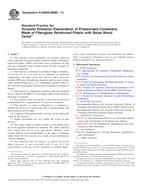
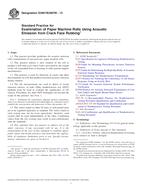 ASTM E2907/E2907M-13..
ASTM E2907/E2907M-13..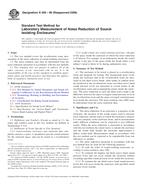 ASTM E596-96(2009)..
ASTM E596-96(2009)..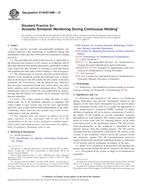 ASTM E749/E749M-12..
ASTM E749/E749M-12..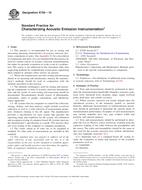 ASTM E750-10
ASTM E750-10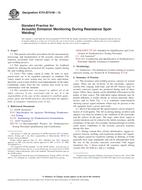 ASTM E751/E751M-12..
ASTM E751/E751M-12..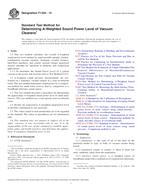 ASTM F1334-14
ASTM F1334-14
 Cookies
Cookies
